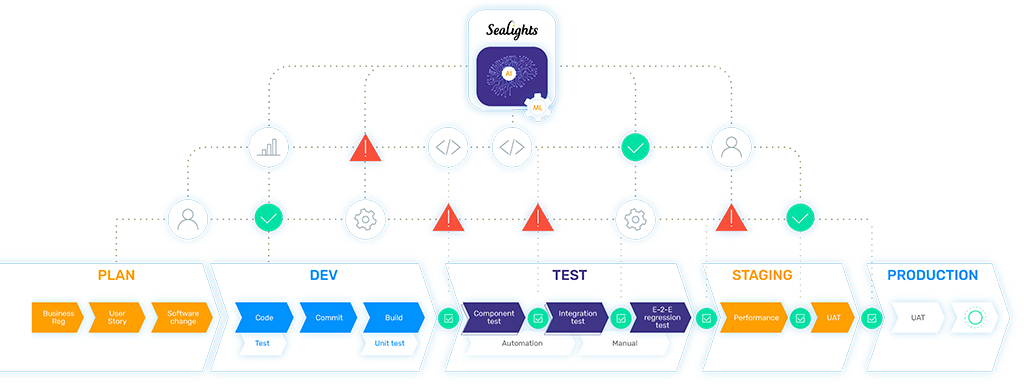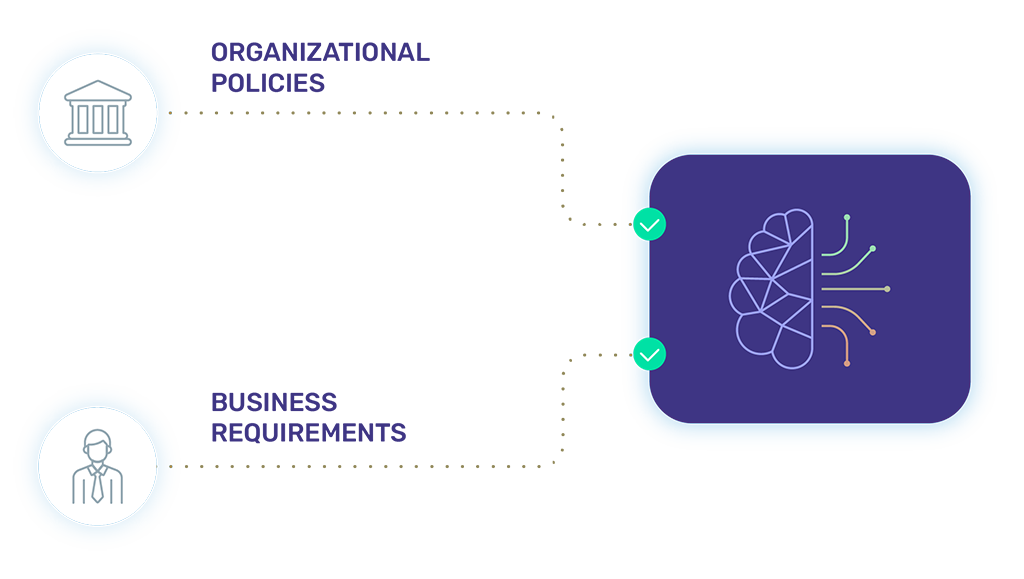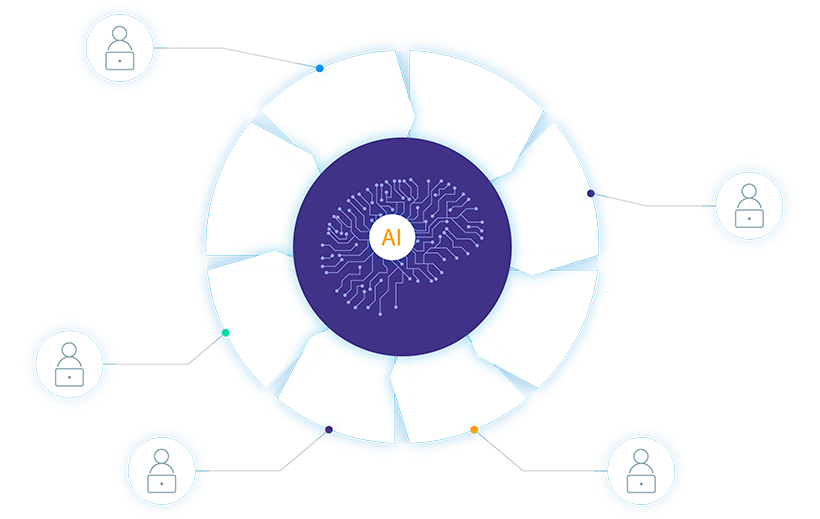Do Organizations Have a Clear Picture of Software Quality?
In today’s enterprises, digital transformation initiatives can span hundreds of software applications, using multiple technology stacks, some built as monoliths, and some composed of a myriad of microservices. Agile delivery frameworks like SAFe and LeSS help enterprises achieve higher development velocity with a strong focus on delivering value to users.
But in this complex, fast-paced environment, with distributed teams and countless tools, frameworks and processes, organizations have limited visibility over quality processes in each software application. Innovation is crucial, but changes can also introduce defects, security vulnerabilities, or compliance infringements that can cost millions.
In today’s fast-paced digital enterprise there is little or no visibility and control over software changes and the quality risks they introduce. Quality is no longer the responsibility of a “QA department”, it is an organizational concern that is owned by everyone, from developers to team leaders to senior management.
Do Organizations Have a Clear Picture of Software Quality?
In today’s enterprises, digital transformation initiatives can span hundreds of software applications, using multiple technology stacks, some built as monoliths, and some composed of a myriad of microservices. Agile delivery frameworks like SAFe and LeSS help enterprises achieve higher development velocity with a strong focus on delivering value to users.
But in this complex, fast-paced environment, with distributed teams and countless tools, frameworks and processes, organizations have limited visibility over quality processes in each software application. Innovation is crucial, but changes can also introduce defects, security vulnerabilities, or compliance infringements that can cost millions.
In today’s fast-paced digital enterprise there is little or no visibility and control over software changes and the quality risks they introduce. Quality is no longer the responsibility of a “QA department”, it is an organizational concern that is owned by everyone, from developers to team leaders to senior management.
SeaLights Quality Governance Provides End-to-End Traceability of Software Changes.
SeaLights Software Quality Governance is the only platform that can provide forensic traceability of software changes, at any scale, from planning to production, while identifying quality risks related to every change. And more importantly, SeaLights identifies, analyzes, reports, helps mitigate and controls quality risks, to prevent them from affecting customers and users.
What is Software Quality Governance?
Software Quality Governance is the automated identification, management, and control of every perceivable Quality Risk across the entire end-to-end delivery pipeline,for every single software change
SeaLights enables Software Quality Governance at every stage of the software development lifecycle (SDLC)—development, testing, staging, and production.
SeaLights Quality Governance Provides End-to-End Traceability of Software Changes.
SeaLights Software Quality Governance is the only platform that can provide forensic traceability of software changes, at any scale, from planning to production, while identifying quality risks related to every change. And more importantly, SeaLights identifies, analyzes, reports, helps mitigate and controls quality risks, to prevent them from affecting customers and users.
What is Software Quality Governance?
Software Quality Governance is the automated identification, management, and control of every perceivable Quality Risk across the entire end-to-end delivery pipeline,for every single software change
SeaLights enables Software Quality Governance at every stage of the software development lifecycle (SDLC)—development, testing, staging, and production.

Development.
SeaLights Software Quality Governance creates Quality Gates that are applied at every pull request.
A Quality Gate analyzes what changes are introduced by the pull request, and what quality risks are related to those changes. It allows or rejects a merge, by matching quality risks to organizational policies and business requirements.
This means that untested or risky changes to critical components are blocked from being introduced to the pipeline.

Development.

SeaLights Software Quality Governance creates Quality Gates that are applied at every pull request.
A Quality Gate analyzes what changes are introduced by the pull request, and what quality risks are related to those changes. It allows or rejects a merge, by matching quality risks to organizational policies and business requirements.
This means that untested or risky changes to critical components are blocked from being introduced to the pipeline.

Testing.
SeaLights Software Quality Governance monitors test execution at every testing level—unit tests, manual exploratory tests, automated functional or end-to-end tests, regression tests, UAT, and more.
SeaLights identifies untested code changes that could represent a risk for the application’s users, or deviate from organizational or compliance requirements.
Developers and testers are informed that specific components in their project are not sufficiently tested and represent a risk—and can remediate the problem early in the testing process
Testing.

SeaLights Software Quality Governance monitors test execution at every testing level—unit tests, manual exploratory tests, automated functional or end-to-end tests, regression tests, UAT, and more.
SeaLights identifies untested code changes that could represent a risk for the application’s users, or deviate from organizational or compliance requirements.
Developers and testers are informed that specific components in their project are not sufficiently tested and represent a risk—and can remediate the problem early in the testing process
Staging and Production.
SeaLights Software Quality Governance monitors applications running in production, to identify which code or software functionality is actually used in production but has not been tested.
This makes it possible to flag areas that might contain quality risks, and act early to prevent production incidents.
With SeaLights, organizations are assured that any change to a software project, at any stage of the SDLC, will be understood and can be blocked from promotion in the pipeline.

Staging and Production.

SeaLights Software Quality Governance monitors applications running in production, to identify which code or software functionality is actually used in production but has not been tested.
This makes it possible to flag areas that might contain quality risks, and act early to prevent production incidents.
With SeaLights, organizations are assured that any change to a software project, at any stage of the SDLC, will be understood and can be blocked from promotion in the pipeline.
